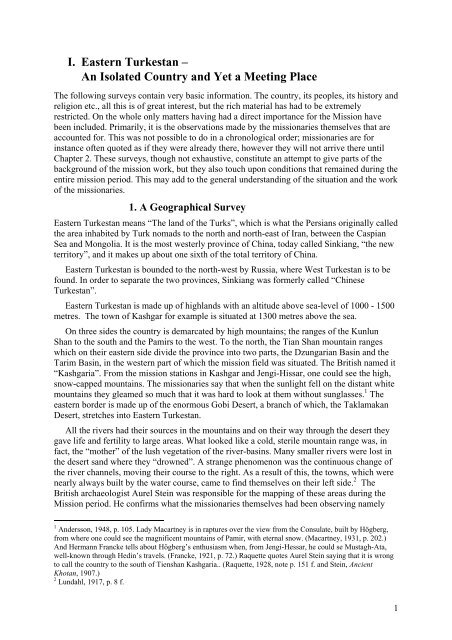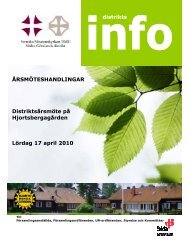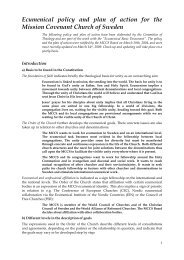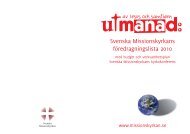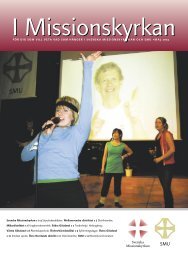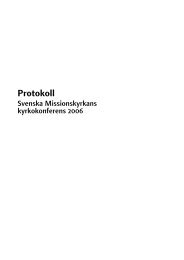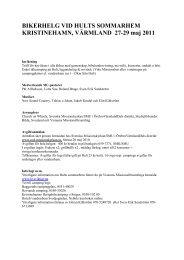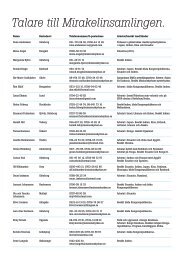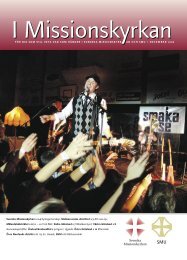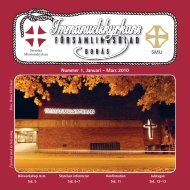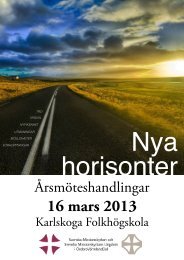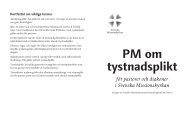Mission and Revolution in Central Asia - Svenska Missionskyrkan
Mission and Revolution in Central Asia - Svenska Missionskyrkan
Mission and Revolution in Central Asia - Svenska Missionskyrkan
You also want an ePaper? Increase the reach of your titles
YUMPU automatically turns print PDFs into web optimized ePapers that Google loves.
I. Eastern Turkestan –<br />
An Isolated Country <strong>and</strong> Yet a Meet<strong>in</strong>g Place<br />
The follow<strong>in</strong>g surveys conta<strong>in</strong> very basic <strong>in</strong>formation. The country, its peoples, its history <strong>and</strong><br />
religion etc., all this is of great <strong>in</strong>terest, but the rich material has had to be extremely<br />
restricted. On the whole only matters hav<strong>in</strong>g had a direct importance for the <strong>Mission</strong> have<br />
been <strong>in</strong>cluded. Primarily, it is the observations made by the missionaries themselves that are<br />
accounted for. This was not possible to do <strong>in</strong> a chronological order; missionaries are for<br />
<strong>in</strong>stance often quoted as if they were already there, however they will not arrive there until<br />
Chapter 2. These surveys, though not exhaustive, constitute an attempt to give parts of the<br />
background of the mission work, but they also touch upon conditions that rema<strong>in</strong>ed dur<strong>in</strong>g the<br />
entire mission period. This may add to the general underst<strong>and</strong><strong>in</strong>g of the situation <strong>and</strong> the work<br />
of the missionaries.<br />
1. A Geographical Survey<br />
Eastern Turkestan means “The l<strong>and</strong> of the Turks”, which is what the Persians orig<strong>in</strong>ally called<br />
the area <strong>in</strong>habited by Turk nomads to the north <strong>and</strong> north-east of Iran, between the Caspian<br />
Sea <strong>and</strong> Mongolia. It is the most westerly prov<strong>in</strong>ce of Ch<strong>in</strong>a, today called S<strong>in</strong>kiang, “the new<br />
territory”, <strong>and</strong> it makes up about one sixth of the total territory of Ch<strong>in</strong>a.<br />
Eastern Turkestan is bounded to the north-west by Russia, where West Turkestan is to be<br />
found. In order to separate the two prov<strong>in</strong>ces, S<strong>in</strong>kiang was formerly called “Ch<strong>in</strong>ese<br />
Turkestan”.<br />
Eastern Turkestan is made up of highl<strong>and</strong>s with an altitude above sea-level of 1000 - 1500<br />
metres. The town of Kashgar for example is situated at 1300 metres above the sea.<br />
On three sides the country is demarcated by high mounta<strong>in</strong>s; the ranges of the Kunlun<br />
Shan to the south <strong>and</strong> the Pamirs to the west. To the north, the Tian Shan mounta<strong>in</strong> ranges<br />
which on their eastern side divide the prov<strong>in</strong>ce <strong>in</strong>to two parts, the Dzungarian Bas<strong>in</strong> <strong>and</strong> the<br />
Tarim Bas<strong>in</strong>, <strong>in</strong> the western part of which the mission field was situated. The British named it<br />
“Kashgaria”. From the mission stations <strong>in</strong> Kashgar <strong>and</strong> Jengi-Hissar, one could see the high,<br />
snow-capped mounta<strong>in</strong>s. The missionaries say that when the sunlight fell on the distant white<br />
mounta<strong>in</strong>s they gleamed so much that it was hard to look at them without sunglasses. 1 The<br />
eastern border is made up of the enormous Gobi Desert, a branch of which, the Taklamakan<br />
Desert, stretches <strong>in</strong>to Eastern Turkestan.<br />
All the rivers had their sources <strong>in</strong> the mounta<strong>in</strong>s <strong>and</strong> on their way through the desert they<br />
gave life <strong>and</strong> fertility to large areas. What looked like a cold, sterile mounta<strong>in</strong> range was, <strong>in</strong><br />
fact, the “mother” of the lush vegetation of the river-bas<strong>in</strong>s. Many smaller rivers were lost <strong>in</strong><br />
the desert s<strong>and</strong> where they “drowned”. A strange phenomenon was the cont<strong>in</strong>uous change of<br />
the river channels, mov<strong>in</strong>g their course to the right. As a result of this, the towns, which were<br />
nearly always built by the water course, came to f<strong>in</strong>d themselves on their left side. 2 The<br />
British archaeologist Aurel Ste<strong>in</strong> was responsible for the mapp<strong>in</strong>g of these areas dur<strong>in</strong>g the<br />
<strong>Mission</strong> period. He confirms what the missionaries themselves had been observ<strong>in</strong>g namely<br />
1 Andersson, 1948, p. 105. Lady Macartney is <strong>in</strong> raptures over the view from the Consulate, built by Högberg,<br />
from where one could see the magnificent mounta<strong>in</strong>s of Pamir, with eternal snow. (Macartney, 1931, p. 202.)<br />
And Hermann Francke tells about Högberg’s enthusiasm when, from Jengi-Hessar, he could se Mustagh-Ata,<br />
well-known through Hed<strong>in</strong>’s travels. (Francke, 1921, p. 72.) Raquette quotes Aurel Ste<strong>in</strong> say<strong>in</strong>g that it is wrong<br />
to call the country to the south of Tienshan Kashgaria.. (Raquette, 1928, note p. 151 f. <strong>and</strong> Ste<strong>in</strong>, Ancient<br />
Khotan, 1907.)<br />
2 Lundahl, 1917, p. 8 f.<br />
1


